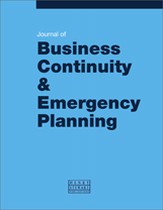Using Twitter and other social media platforms to provide situational awareness during an incident
Abstract
The recent use of social media by protesters in Iran, Egypt, Yemen and elsewhere has focused new attention on this communications medium. Government agencies and businesses, as well, are using social media to push information to their stakeholders. Those who are on the front lines of this information revolution, however, realise that social media is most effective when the communication is two-way. Unlike other media, social media allows information sharing. This, in turn, provides emergency managers with new situational-awareness resources when trying to mitigate an incident. As Federal Emergency Management Agency (FEMA) Administrator Craig Fugate told Information Week on January 19th, 2011: ‘We can adjust much quicker if we can figure out how to have (a) two-way conversation and if we can look at the public as a resource. The public is putting out better situational awareness than many of our own agencies can.’ This paper provides examples of how social media can be used as a situational-awareness resource and specific ‘tools’ that can be used to assist with this task.
The full article is available to subscribers to the journal.
Citation
Tobias, Ed (2011, October 1). Using Twitter and other social media platforms to provide situational awareness during an incident. In the Journal of Business Continuity & Emergency Planning, Volume 5, Issue 3. https://doi.org/10.69554/NGIN5092.Publications LLP
